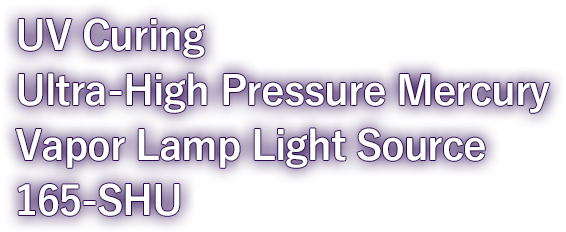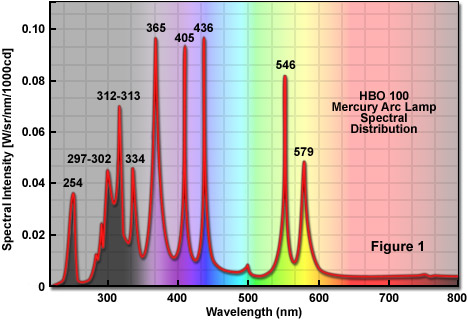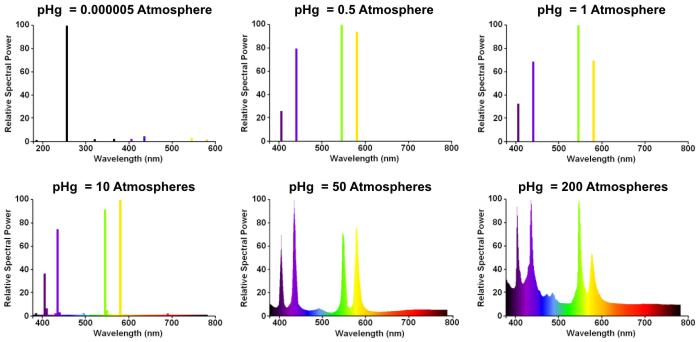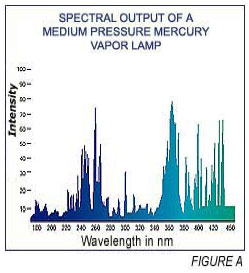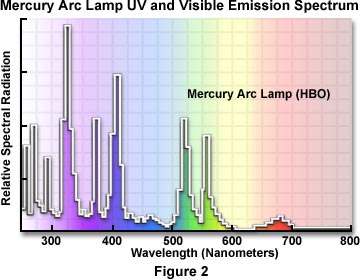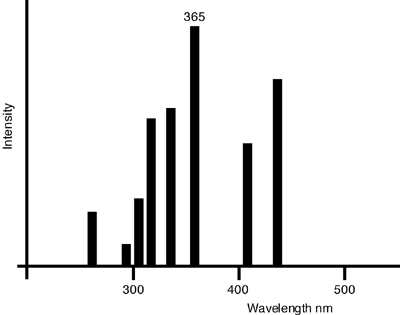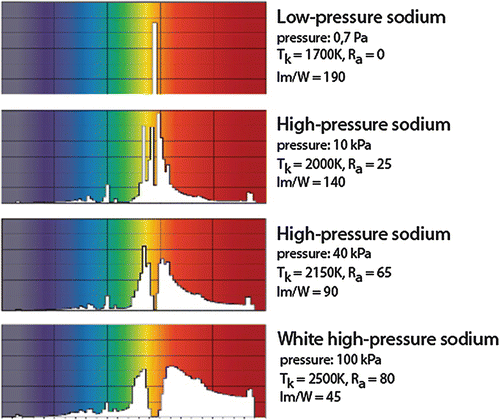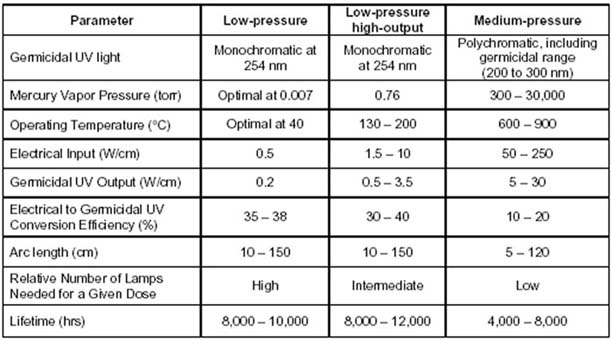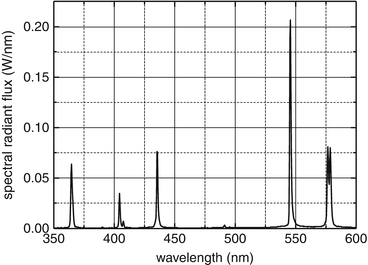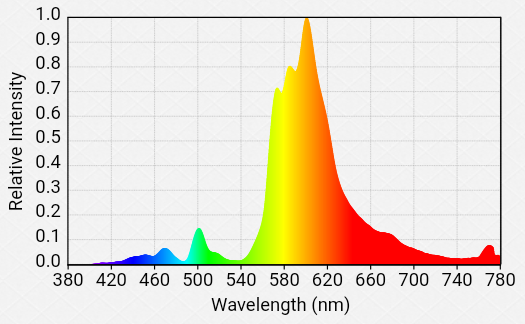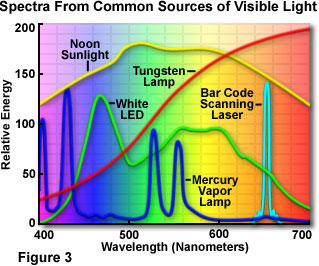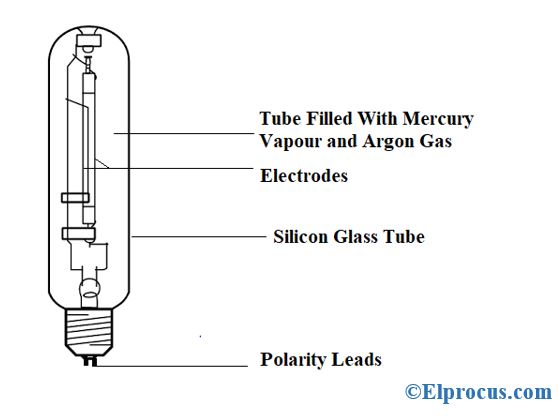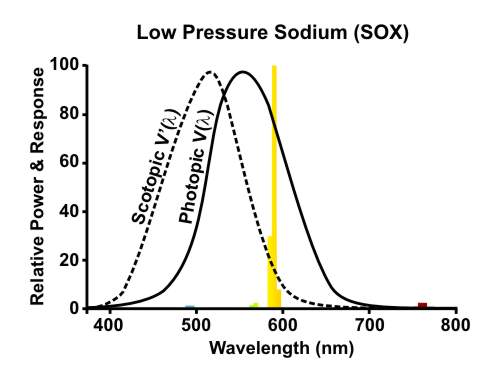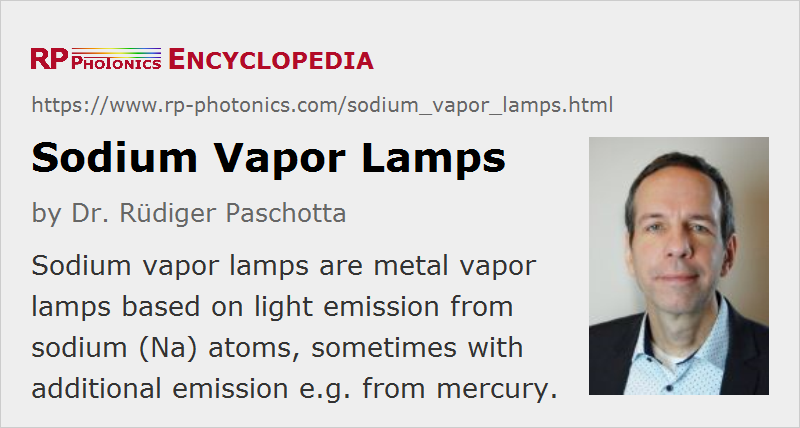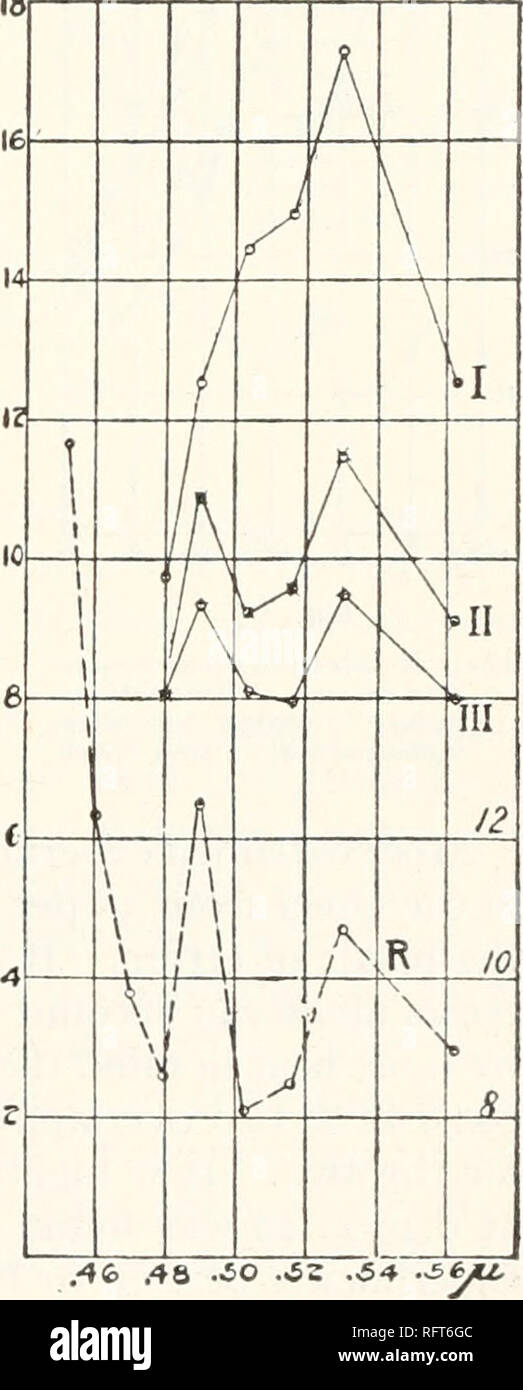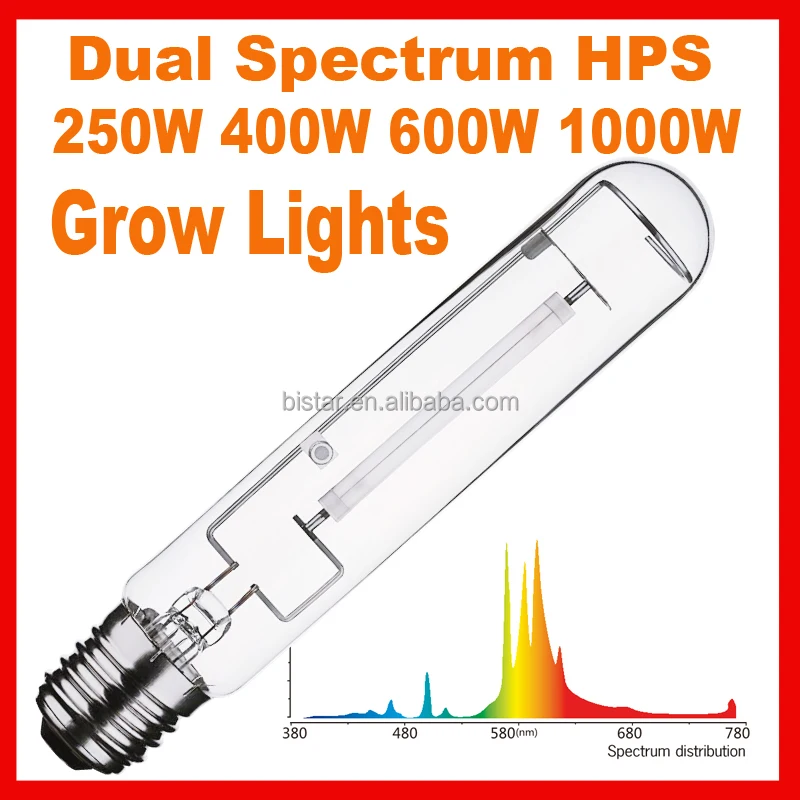Charles wheatstone observed the spectrum of an electric discharge in mercury vapor in 1835 and noted the ultraviolet lines in that spectrum.
High pressure mercury vapour lamp spectrum.
The mercury helps add a blue spectrum light to the pure yellow of the sodium.
A metal halide lamp is an electrical lamp that produces light by an electric arc through a gaseous mixture of vaporized mercury and metal halides compounds of metals with bromine or iodine it is a type of high intensity discharge hid gas discharge lamp.
Liquid mercury droplets collect at the lamp s cold spot once the mercury droplets reach their peak temperature maximum uvc output occurs.
They require a shorter arc length.
The lamp heats and the sodium is the last material to vaporize.
Because their output is much more pleasant to look at they have replaced mercury vapor in streetlight applications.
The sodium vapor strikes an arc over 240 c.
High pressure sodium lamps producing up to 150 lumens per watt produce a broader light spectrum than the low pressure sodium lamps.
High pressure mercury vapor arc lamps a type of high intensity discharge lamps are operated with a pressure of the order of one atmosphere and with much increased power densities so that more mercury is evaporated the high density of the vapor allows for light emission with a much higher radiance.
In such lamps there is also much stronger spectral broadening.
Developed in the 1960s they are similar to mercury vapor lamps but contain additional metal halide compounds in the quartz arc tube.
Later cooper hewitt mercury vapor tubes and historic fixture.
The sodium is mixed with other impurities to create a more white light.
Low pressure and high pressure low pressure sodium lamps are highly efficient electrical light sources but their yellow light restricts applications to outdoor lighting such as street lamps where they are widely used.
In 1860 john thomas way used arc lamps operated in a mixture of air and mercury vapor at atmospheric pressure for lighting.
The german physicist leo arons 1860 1919 studied mercury discharges in 1892 and developed a lamp based on a mercury arc.
High pressure sodium lamps turn 50 of the electrical energy into visible light.
1906 higher pressure mercury vapor light in a fuzed quartz tube is developed kuch retschinsky siemens munich 1936 the modern high pressure mercury vapor lamp is developed type mb.
Another low pressure mercury lamp option is our standard and high output ho uvc lamps that use mercury vapor to emit uvc light.
Two varieties of such lamps exist.
